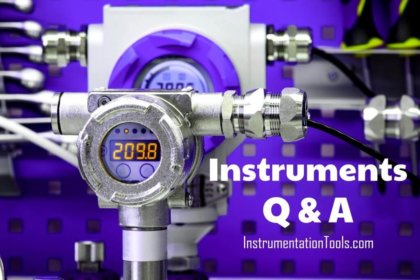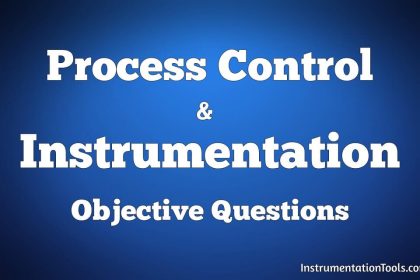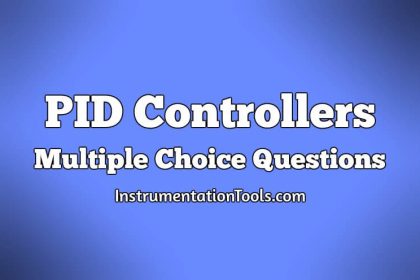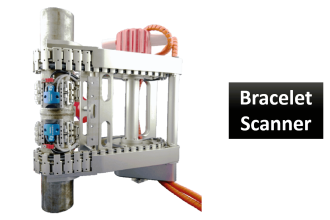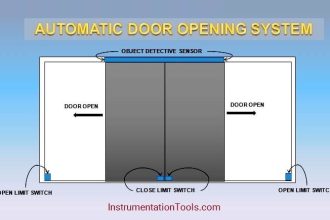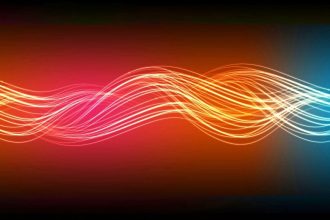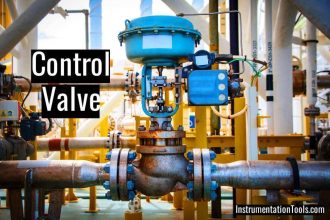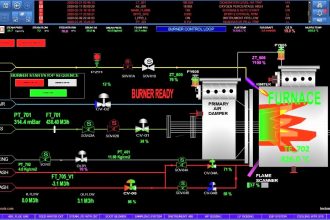In this article, you will find the fiber optic measurement multiple choice questions and answers (MCQ) to test your knowledge.
Fiber Optic Measurement Questions
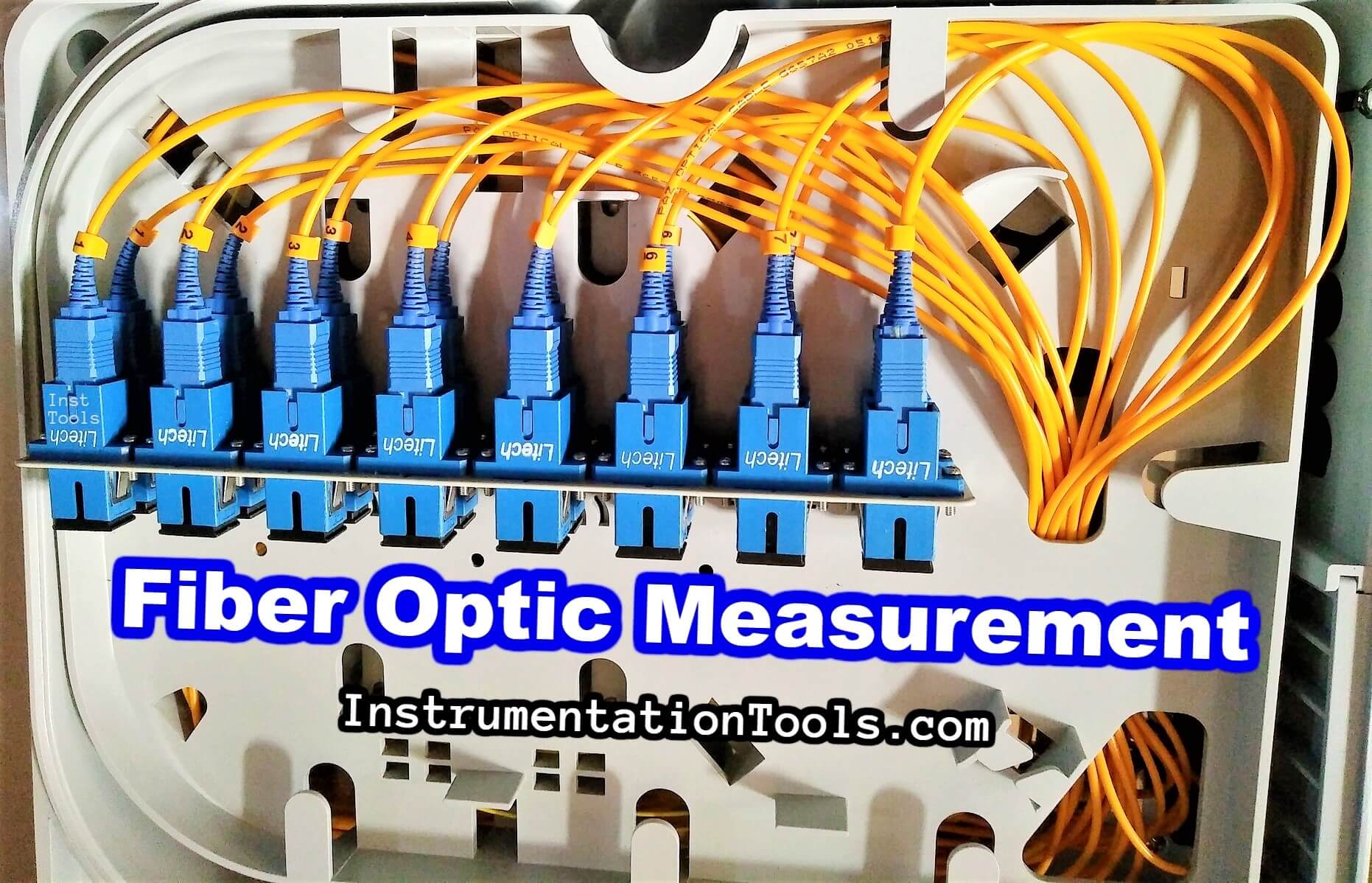
The below list provides all the objective questions and answers related to the fiber optic.
Answers are available at the bottom of the article.
1. All of the light emitted by a semiconductor laser or LED is coupled into an optical fiber.
| A) | False |
| B) | True |
2. The return loss of a fiber optic component is which of the following measurements?
| A) | none of these answers |
| B) | The difference in the power loss when a component is measured in reverse directions |
| C) | The amount of loss of the reflected light compared with the transmitted light at a component |
| D) | The amount of loss of the reflected light compared with the power of the incident beam at the interface |
3. End users perform fiber geometry measurements for which of the following reasons?
| A) | To reduce system attenuation and coupling losses from fiber mismatches |
| B) | To reduce system bandwidth limitations |
| C) | To determine which connector to use |
| D) | To separate bigger fibers from smaller fibers |
4. When fiber attenuation is measured with an OTDR, the end cursor, Z2, should be placed at what point along the OTDR trace?
| A) | On the steep downward part of the trace just after the beginning connector or splice |
| B) | On the gradual downward part of the trace just after the reflective spike from the beginning connector or splice |
| C) | Just before the connector or the splice at the beginning of the fiber |
| D) | On the gradual downward part of the trace just before the ending connector or splice |
5. An optical source has which of the following functions?
| A) | To convert light to electrical energy (current) |
| B) | To convert electrical energy into light |
| C) | To amplify the electrical signal |
| D) | To convert light into sound |
6. Relevant optical power does NOT depend on which of the following factors?
| A) | The dopants in the semiconductor material |
| B) | The alignment of the source and the fiber |
| C) | The angles over which the source emits light |
| D) | The size of the source’s light-emitting area relative to the fiber core size |
7. What is a mode filter?
| A) | A device that converts cladding power to core power |
| B) | A device that attenuates specific modes propagating in the core of the fiber |
| C) | A device that removes any cladding power from the fiber |
| D) | A device that attenuates specific wavelengths of light in the core of the fiber |
8. Field loss measurements are made by using which of the following test equipments?
| A) | Low power calorimeters |
| B) | Optical time domain reflectometers only |
| C) | Optical sources and power meters only |
| D) | Optical sources and power meters; and optical time domain reflectometers |
9. When the cutoff wavelength is reached, why does the transmitted power in a single-mode fiber abruptly decrease?
| A) | The fiber diffusion increases at the cutoff wavelength |
| B) | The second-order mode ceases to propagate at the cutoff wave-length |
| C) | The fiber scattering increases at the cutoff wavelength |
| D) | The fiber absorption increases at the cutoff wavelength |
10. End users should measure some component parameters upon receipt before installing a component into a fiber optic system for which of the following reasons?
| A) | To verify the quality of the manufactured parts |
| B) | To determine if the component has been damaged in the shipping process |
| C) | none of these answers |
| D) | To characterize the component design |
11. What is the function of a fiber optic transmitter?
| A) | To convert electrical signals into optical signals and transmit the optical signals through the air |
| B) | To convert optical signals into electrical signals only |
| C) | To convert electrical signals into optical signals and launch the optical signals into an optical fiber |
| D) | To amplify optical signals and launch the amplified optical signals into an optical fiber |
12. When OTDR measurements are made, a dead zone fiber is used for what reason?
| A) | To compensate for the inaccuracy of the OTDR |
| B) | To reduce the effect of the initial reflection at the OTDR on the measurement |
| C) | To maximize the reflectance at the first connection |
| D) | To match the fiber types at the first connection |
13. For single-mode fiber, what method is typically used to assure that power is launched into only the fundamental mode?
| A) | Only LEDs are used as test optical sources |
| B) | A 30-mm diameter mandrel or freeform loop is applied at the launch end of the fiber |
| C) | Only lasers are used as test optical sources |
| D) | The fiber is always placed at a 45º angle with respect to the plane of the source |
14. Stimulated emission is the random generation of photons within the active area of an LED.
| A) | True |
| B) | False |
15. The fiber near-field is which of the following regions?
| A) | The region far from the fiber-end face |
| B) | The region about one foot of the fiber-end face |
| C) | The region within 3 to 5 cm of the fiber-end face |
| D) | The region close to the fiber-end face, within a few cm of the end face |
16. Incoherent light has what type of lightwaves?
| A) | Lightwaves that are produced by lasers |
| B) | Lightwaves that lack a fixed-phase relationship |
| C) | Lightwaves that have a fixed-phase relationship |
| D) | Lightwaves that contain only one wavelength of light |
17. The spreading of a light pulse as it travels along the fiber is caused by what mechanism?
| A) | Attenuation |
| B) | Diffraction |
| C) | Absorption |
| D) | Dispersion |
18. What is it called when the fiber end face is directly placed over the source emitting region?
| A) | Butt coupling |
| B) | Lensed coupling |
| C) | Evanescent coupling |
| D) | Fresnel coupling |
19. When a point defect (a connector or a splice) exhibits an apparent gain in power in one direction, it exhibits which of the following properties is in the other direction?
| A) | No gain or loss in power |
| B) | The same apparent gain in power |
| C) | An exaggerated loss in power |
| D) | A slight loss in power |
20. What does the term overfilled launch mean?
| A) | When the launch spot size and the angular distribution are larger than that of fiber core |
| B) | When too much power is launched into the fiber |
| C) | When not enough power is launched into the fiber |
| D) | When light is launched only into the low order mode |
21. Which of the following are considered launch conditions?
| A) | The humidity at the time of measurement |
| B) | The temperature at the time of measurement |
| C) | The type of connector or splice used on the fiber |
| D) | The way power is launched into the optical fiber |
22. In an optical source, the input electrical energy is converted to light, and which of the following other forms of energy?
| A) | Heat |
| B) | Gravitational |
| C) | All of these answers |
| D) | Sound |
23. In a fiber, the intermodal (modal) dispersion is greatest under what condition?
| A) | When the input pulse has a long rise time |
| B) | When the input pulse has an extremely high amount of power |
| C) | When the source spectrum contains many different wavelengths |
| D) | When all fiber modes are excited |
24. End users should measure some component parameters after installation of the component in the fiber-optic system for which of the following reasons?
| A) | To characterize the component design |
| B) | To verify the quality of the manufactured parts |
| C) | To determine if the installation process has degraded the component performance beyond allowable limits |
| D) | To determine if the component has been damaged in the shipping process |
25. In what part of the fiber does an underfilled launch concentrate most of the optical power?
| A) | In the center of the fiber |
| B) | In the cladding |
| C) | At the edge of the fiber |
| D) | Over all of the fiber |
26. In laboratory fiber attenuation measurements, the output optical power of long fiber is compared with the optical power launched into that same fiber two meters from the optical source.
This method of measuring the optical attenuation is called the
| A) | OTDR method |
| B) | two-point method |
| C) | cutback method |
| D) | fiber method |
27. During the measurement of the link’s output optical power, the test setup is described by which of the following orders?
| A) | Source, test jumper, link, test jumper, power meter |
| B) | Source, link, test jumper, power meter |
| C) | Source, test jumper, link, power meter |
| D) | Source, link, power meter |
28. Lasers produce light by what process?
| A) | Stimulated emission |
| B) | Combustion |
| C) | Spontaneous emission |
| D) | Photosynthesis |
29. When the distance between the ends of a fiber is measured with an OTDR, the initial cursor should be placed at what point along the OTDR trace?
| A) | On the gradual downward part of the trace just after the reflective spike from the beginning connector or splice |
| B) | On the gradual downward part of the trace just before the ending connector or splice |
| C) | Just before the connector or the splice at the beginning of the fiber |
| D) | On the steep downward part of the trace just after the beginning connector or splice |
30. The numerical aperture of a multi- mode fiber is best described by which of the following definitions?
| A) | Half the difference between the 50% angles of the near-field distribution |
| B) | Half the difference between the 5% angles of the far-field distribution |
| C) | Half the difference between the 50% angles of the far-field distribution |
| D) | Half the difference between the 5% angles of the near-field distribution |
31. The initial pulse (or spike) at the beginning and at most connections in a link on the OTDR trace is caused by which of the following processes?
| A) | Second harmonic generation at the beginning of each piece of fiber |
| B) | Reflected power at each air gap in the link |
| C) | Extremely high losses at the beginning of each piece of fiber |
| D) | Amplification of the OTDR pulse at the beginning of each piece of fiber |
32. Manufacturers should measure some component parameters during and after component manufacture for which of the following reasons?
| A) | To determine if the installation process has degraded the component performance beyond allowable limits |
| B) | To characterize the component design |
| C) | To determine if the component has been damaged in the shipping process |
| D) | To verify the quality of the manufactured parts |
33. The mode field diameter of a single mode fiber relates to which of the following factors?
| A) | The cladding diameter of a multimode fiber |
| B) | The cladding diameter of a single mode fiber |
| C) | The spot size of the fundamental mode of a single mode fiber |
| D) | The coating diameter of the single mode fiber |
34. Standard test methods used for testing fiber optic components or systems can be found in which of the following test documents?
| A) | EIA/TIA-526 only |
| B) | MIL-STD 2196 |
| C) | EIA/TIA-455 only |
| D) | EIA/TIA-455 and EIA/TIA 526 |
35. The fiber far-field is which of the following regions?
| A) | The region exactly next to the fiber end face |
| B) | Anywhere inside the acceptance cone of the fiber |
| C) | The region close to the fiber-end face, within a few cm of the end face |
| D) | The region far from the fiber-end face, greater than a few cm for multimode and mm for single-mode |
36. OTDR measurements should be performed in each direction and averaged for which of the following reasons?
| A) | none of these answers |
| B) | Variations in fiber properties (backscattering) change the OTDR measurement, depending on the direction of the measurement; bidirectional averaging eliminates these effects |
| C) | Fibers transmit preferentially in one direction; therefore, measurements must be made to determine the preferential direction |
| D) | OTDRs are not consistent measurement tools; therefore, multiple measurements must be made |
37. When using a light source and a power meter to make link loss measurements, which of the following steps should you perform first?
| A) | Connect the link directly between the source and the power meter |
| B) | Connect the reference jumper between the source and the power meter |
| C) | Connect the reference jumper and one test jumper between the source and the power meter |
| D) | Connect the link directly between two power meters |
38. To remove high-order modes in multimode fibers, which of the following mode filters is normally used?
| A) | Bessel filter |
| B) | Neutral density filter |
| C) | Bandpass filter |
| D) | Mandrel wrap filter |
39. Cladding diameter, cladding non circularity, core-cladding concentricity error, and core non circularity are measured by which of the following techniques?
| A) | Video cameras attached to a computer for digital analysis |
| B) | Micrometer calipers |
| C) | Electron microscopes |
| D) | Ruler |
40. What are the two most common semiconductor materials used in electronic and electro-optic devices?
| A) | Zinc and platinum |
| B) | Indium and zirconium |
| C) | Germanium and aluminum |
| D) | Silicon and gallium arsenide |
41. Measurements made with an optical time domain reflectometer are more accurate than those made with an optical source and an optical power meter.
| A) | False |
| B) | True |
42. Semiconductor LEDs emit which of the following kinds of light?
| A) | Incoherent |
| B) | Coherent only |
| C) | Monochromatic only |
| D) | Coherent and monochromatic |
43. Why does chromatic dispersion occur?
| A) | Because different fiber modes have different propagation speeds |
| B) | Because different fiber modes are attenuated differently in the fiber |
| C) | Because different colors of light are attenuated differently in the fiber |
| D) | Because different colors of light travel through the fiber at different speeds |
44. The core diameter of a multimode fiber is defined by which of the following measurements?
| A) | The distance between the 50% points of the measured near-field distribution |
| B) | The distance between the 2.5% points of the measured far-field distribution |
| C) | The distance between the 50% points of the measured far-field distribution |
| D) | The distance between the 2.5% points of the measured near-field distribution |
45. Some properties may change during installation; therefore, they are typically measured in the field.
All of the following measurements should be made in the field except which one?
| A) | Fiber loss |
| B) | None of these answers |
| C) | Connector/splice return loss |
| D) | Connector/splice insertion loss |
46. LEDs produce light by what process?
| A) | Combustion |
| B) | Stimulated emission |
| C) | Photosynthesis |
| D) | Spontaneous emission |
47. Insertion loss is determined by which of the following techniques?
| A) | The power transmitted through a cable is compared to the power transmitted through a similar piece of cable |
| B) | The power transmitted through a component with a mandrel wrap on the fiber is compared to the power transmitted through the component without a mandrel wrap inserted |
| C) | The power transmitted through a component is compared to the power transmitted through the fiber or the cable before the component was inserted |
| D) | The power transmitted through a connector is compared to the power transmitted through a similar connector |
48. Modal bandwidth is normally given in what units?
| A) | GHz |
| B) | MHz/km |
| C) | MHz |
| D) | MHz-km |
49. Launch conditions in an attenuation measurement are important to measurement personnel for which of the following reasons?
| A) | The use of the wrong launch condition will damage the optical power meter |
| B) | The attenuation measured for each different launch condition will be different |
| C) | The use of the wrong launch condition will damage the fiber |
| D) | The fibers will only transmit light launched in one particular manner |
50. An OTDR should not be used to measure optical fibers or links that are less than a specific minimum length. What is that length?
| A) | 5 m |
| B) | 250 m |
| C) | 50 m |
| D) | 100 m |
51. Fiber-optic communication systems typically operate in what three-wavelength windows?
| A) | 850 nm, 1300 nm, and 1550 nm |
| B) | 400 nm, 850 nm, and 1550 nm |
| C) | 400 nm, 900 nm, and 1400 nm |
| D) | 1300 nm, 2000 nm, and 4000 nm |
52. The far-field power distribution describes the emitted power per unit as a function of the angle ÿ from the fiber axis some distance from the fiber-end face.
| A) | False |
| B) | True |
53. When fiber attenuation is measured with an OTDR, the initial cursor, Z1, should be placed at what point along the OTDR trace?
| A) | On the gradual downward part of the trace just after the reflective spike from the beginning connector or splice |
| B) | On the gradual downward part of the trace just before the ending connector or splice |
| C) | Just before the connector or the splice at the beginning of the fiber |
| D) | On the steep downward part of the trace just after the beginning connector or the splice |
54. Determining the cutoff wavelength of a single-mode fiber involves finding the wavelength above which the power transmitted through the fiber decreases abruptly.
| A) | True |
| B) | False |
55. Semiconductor lasers emit which of the following kinds of light?
| A) | All of these answers |
| B) | Coherent |
| C) | Incoherent |
| D) | Spontaneous |
56. Which of the following items is/are part of a fiber optic transmitter?
| A) | An optical source, a source drive circuit, and an interface circuit |
| B) | An optical source only |
| C) | A source drive circuit only |
| D) | An optical source and a source drive circuit only |
57. The loss of optical power as light travels along a fiber is called
| A) | scattering |
| B) | absorption |
| C) | dispersion |
| D) | attenuation |
58. What is the wavelength called over which the fiber will propagate only one mode?
| A) | Rayleigh wavelength |
| B) | Cutoff wavelength |
| C) | Cutback wavelength |
| D) | Fresnel wavelength |
59. The fiber bandwidth (-3 dB) is defined as the lowest frequency at which the magnitude of the fiber frequency response has decreased to what portion of its zero-frequency value?
| A) | Three-fourths |
| B) | One-tenth |
| C) | One-fifth |
| D) | One-half |
60. Which of the following properties are NOT desired properties of an optical source?
| A) | Emit light at wavelengths that maximize fiber loss and dispersion |
| B) | Cost less and be more reliable than electrical devices |
| C) | Maintain stable operation in changing environmental conditions |
| D) | Be compatible in size to low-loss optical fibers |
Click Here for Answers
If you liked this article, then please subscribe to our YouTube Channel for Electrical, Electronics, Instrumentation, PLC, and SCADA video tutorials.
You can also follow us on Facebook and Twitter to receive daily updates.
Next Quiz:
- Measuring Instruments Questions
- Electrical and Instrumentation Test
- Process Control Objective Questions
- Circuit Protection Devices Questions
- Nuclear Plant Sensor Questions


